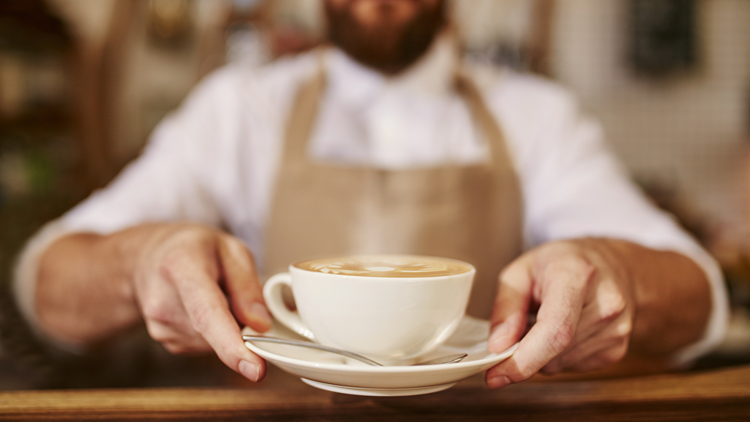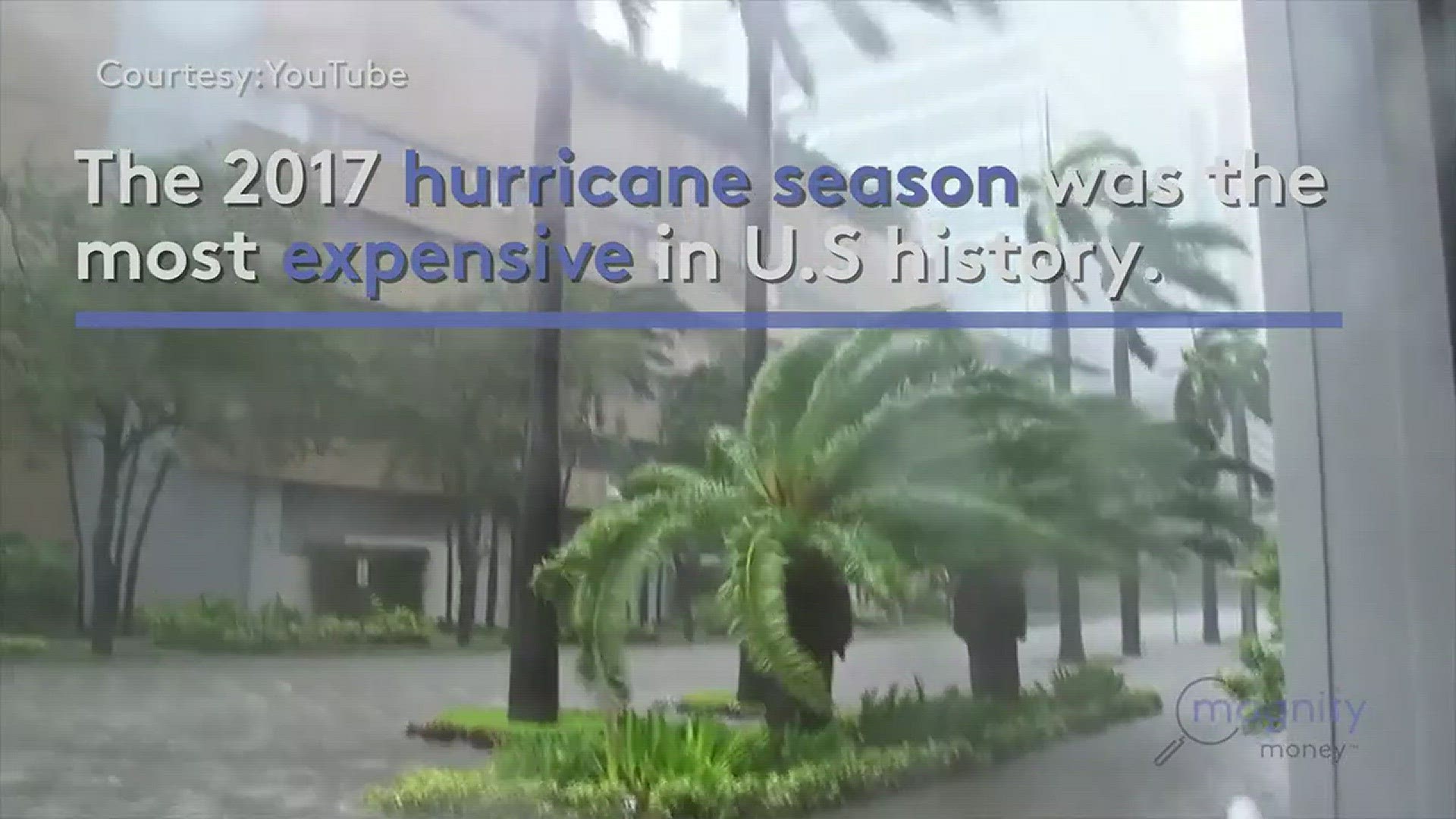You might have noticed something new on your last trip to the local coffee shop — a higher price for drip coffee.
In June, Starbucks raised the price of the coffee by 10 to 20 cents at most of its company-owned stores in the U.S. The price for a drip coffee in a “tall” size went from $1.95 to $2.15, for example.
And it’s not just Starbucks. Coffee shops around the country are facing more saturated markets, which can lead to increased costs, said Shawn Hackett, president of Hackett Financial Advisors, a Boca Raton, Fla.-based agriculture commodity analysis firm.
We can’t blame the price of coffee beans alone, Hackett noted. Export data about the price of coffee for all major origins and type from the International Coffee Organization shows that prices have dropped for the third consecutive month in April 2018. The organization also says world coffee production in 2017-2018 is estimated at 159.66 million bags, or 1.2 percent higher than last year.
So if it’s not the price or amount of coffee imported into the U.S., here are four reasons why your caffeine addiction may take a larger chunk out of your wallet.
Cold brew is on the rise
Some American caffeine connoisseurs are clamoring for cold-brew coffees, as market research firm Mintel noted in a 2017 report that premium options are benefiting coffee shop sales. Because cold-brew coffees require more beans than regular hot brewed coffee per serving, it is sold at a higher price point than regular coffee, said Hackett.
The process to create a cold-brew coffee is also more intense than the one used to make traditional iced coffee. Instead of pouring warm brewed coffee over ice, the cold-brew blend is steeped in a container of cool water for hours (in the case of Starbucks, it’s steeped for 20 hours).
The intensity of the process, plus the additional beans used to make it, lead to a steeper price, he said.
In 2015, when Starbucks introduced cold-brew batches, the average price for a 16-ounce cold brew at Starbucks was $3.25, while the traditional iced coffee was $2.65.
Likewise, at a Starbucks in Dallas, a 16-ounce freshly brewed cup of hot coffee was priced in June 2018 at $2.25, an iced coffee was $2.75 and a Nariño 70 Cold Brew coffee was $3.45 (prices don’t include tax).
As cold-brew coffee continues to interest consumers, it could continue to be a factor that explains the increase in coffee prices seen in the marketplace, said Hackett.
Coffee culture
The maturation of the coffeehouse industry also plays a role. It may have already happened to you: A favorite local coffee shop closed and sent you to a competitor. Some coffee shops will shut down and others will raise prices.
If you think of the market for coffee shops as a pie, Hackett said, 20 years ago, there were not as many coffee shops, so business growth was inevitable. However, today, as coffee shops get closer and closer to finishing the pie, all coffee shops are “scraping for moderately incremental growth,” he said.
Data from Mintel estimated that sales in the coffeehouse market were expected to reach $23.4 billion in 2017, up 41 percent since 2011. Sales are expected to grow to $28.7 billion by 2021, even with a slowing of coffee shop openings. The total number of coffee shops was forecast to grow by 2.17 percent in 2017, much slower than in the previous six years, according to the 2017 report by Mintel.
“Many operators overproduce. (They) open up too many stores, so there’s oversaturation in some markets, meaning there’s not enough of the pie to actually support everybody,” Hackett said. “That’s why stores go out of business.”
When a big chain, such as Starbucks faces a maturing market, it will close down stores that are not profitable. But the company also will increase prices at high-performing stores to maximize the revenue it can create, he said.
A larger chain has more room than smaller coffee operation or individually owned shops to increase its price because of its brand and customer loyalty, he said.
For a small local cafe, a maturing market could mean scrambling to figure out what will differentiate its store or raising prices to stay in business. This is tricky, Hackett said, because businesses do not want raise their prices more than what consumers are willing to pay.
Public policy
Improved and new roads, bike lanes and park space where you live may come at the expense of a few extra cents for your coffee. When local governments pass special sales taxes for items such as transportation, it can trickle down to businesses including coffee shops.
For consumers of Jittery Joe’s coffee in Athens, Ga., for example, that’s how infrastructure improvements such as road improvements and a new greenway are being funded. In November 2017, Athens-Clarke County residents voted for a Transportation Special Purpose Local Option Sales Tax (T-SPLOST) referendum that increased the sales tax from 7 to 8 percent. The new sales tax took effect Apr. 1, 2018.
“For the first time ever, the sales tax percentage in Clarke County, since we’ve been in business, moved, and so we had to move with it,” said Bob Googe, CEO of Jittery Joe’s, which has locations in Athens as well as in Atlanta, Macon, Ga., and Cleveland, Tenn.
Sales tax policies aimed to better communities influence business practices, said Hackett.
“When all those costs are rising for (businesses), at least for a coffee shop, one way to offset is to raise the price of a cup of coffee,” he said.
Inflation brews up price hikes
Some level of inflation plays a part in an overall price increase for almost every product on the market, including coffee. Fluctuations in price can be incremental, although sometimes extreme, and build over time.
According to the Bureau of Labor Statistics, the average price for a cup of coffee in 1913 was about 30 cents. A century later, the average price hit $5.90.
The hills and valleys of inflation shows up in a snapshot of the price of coffee at three different times over the past eight years. In 2010, the average price for a cup of joe was about $3.85, according to Bureau of Labor Statistics data.
At its peak, in 2013, the price was just over $6. The price has been on a overall decreasing trend since 2013 and sits at about $4.30 in spring 2018. So if you see prices at your go-to shop starting to rise again, one upside as you sip on your favorite blend or latte is that it hasn’t yet matched the 2013 highs.
Hackett said coffee consumers should expect prices to continue increasing because of this natural economic trend.
“There is always a widespread increase in the cost of just about everything because there is some element of inflation, whether it’s 1 percent, 2 percent — whatever the number is,” he said.
The post 4 Reasons Coffee Is Getting More Expensive That Have Nothing to Do With the Price of Beans — TEGNA appeared first on MagnifyMoney.
MORE FROM MAGNIFYMONEY:
MagnifyMoney is a price comparison and financial education website, founded by former bankers who use their knowledge of how the system works to help you save money.



